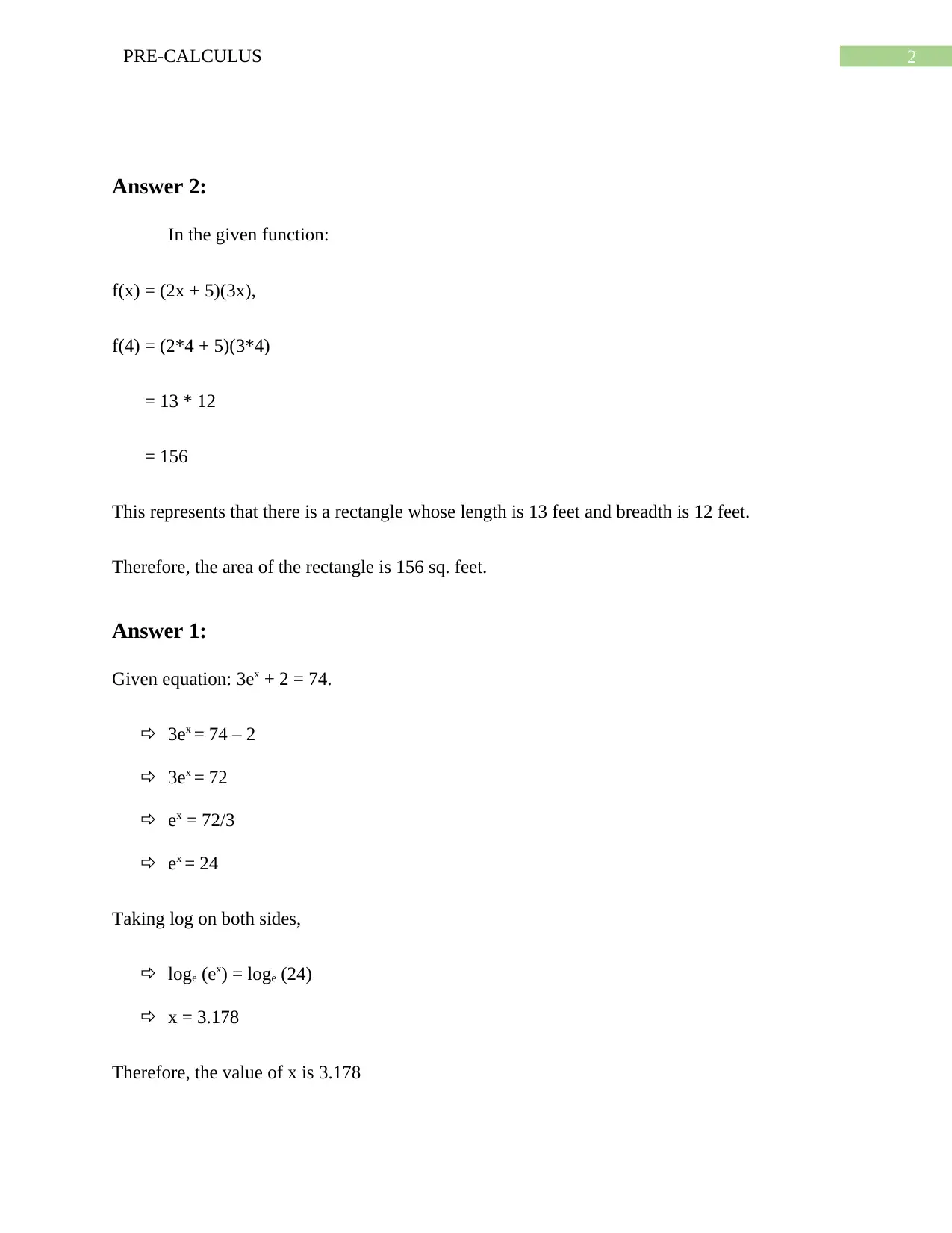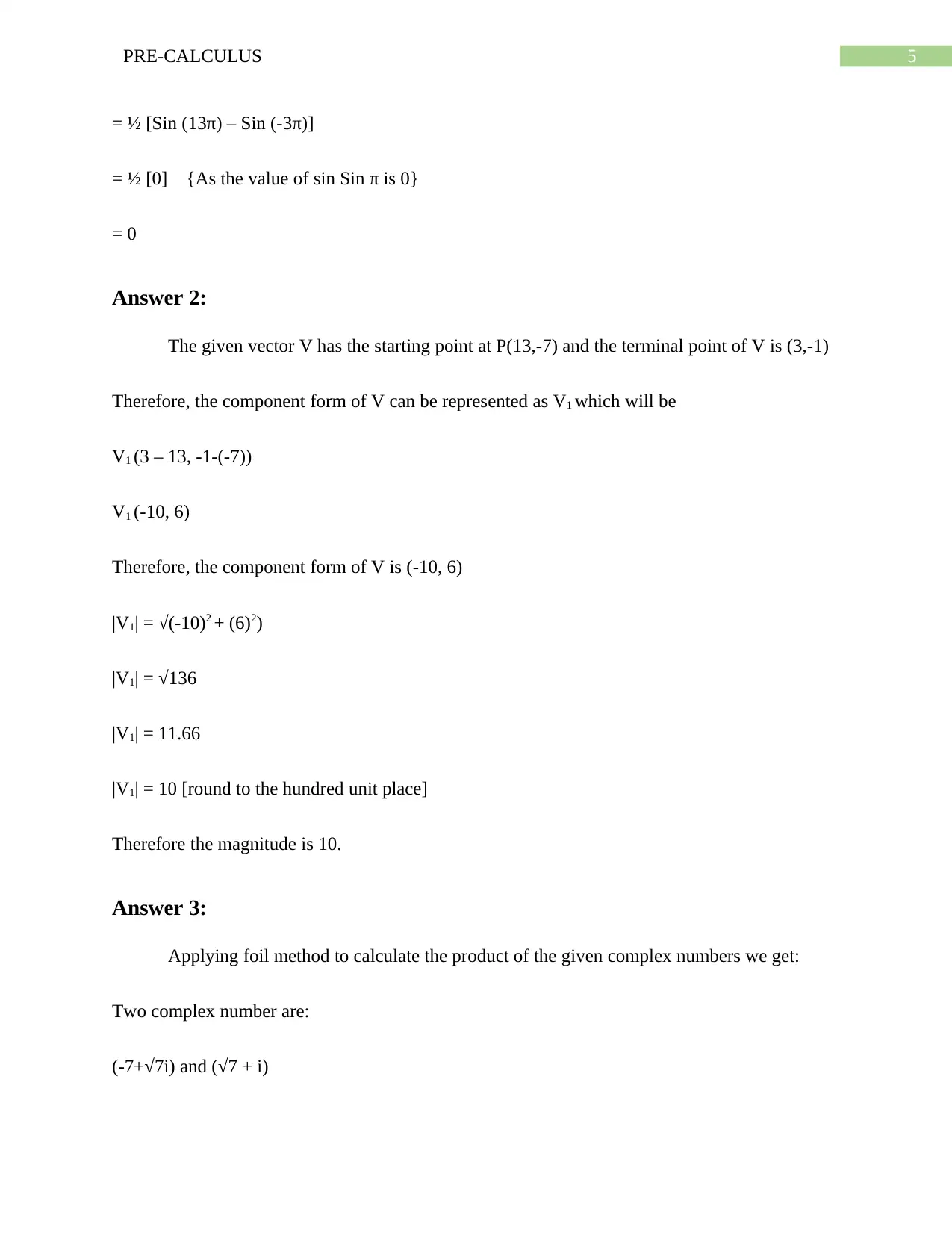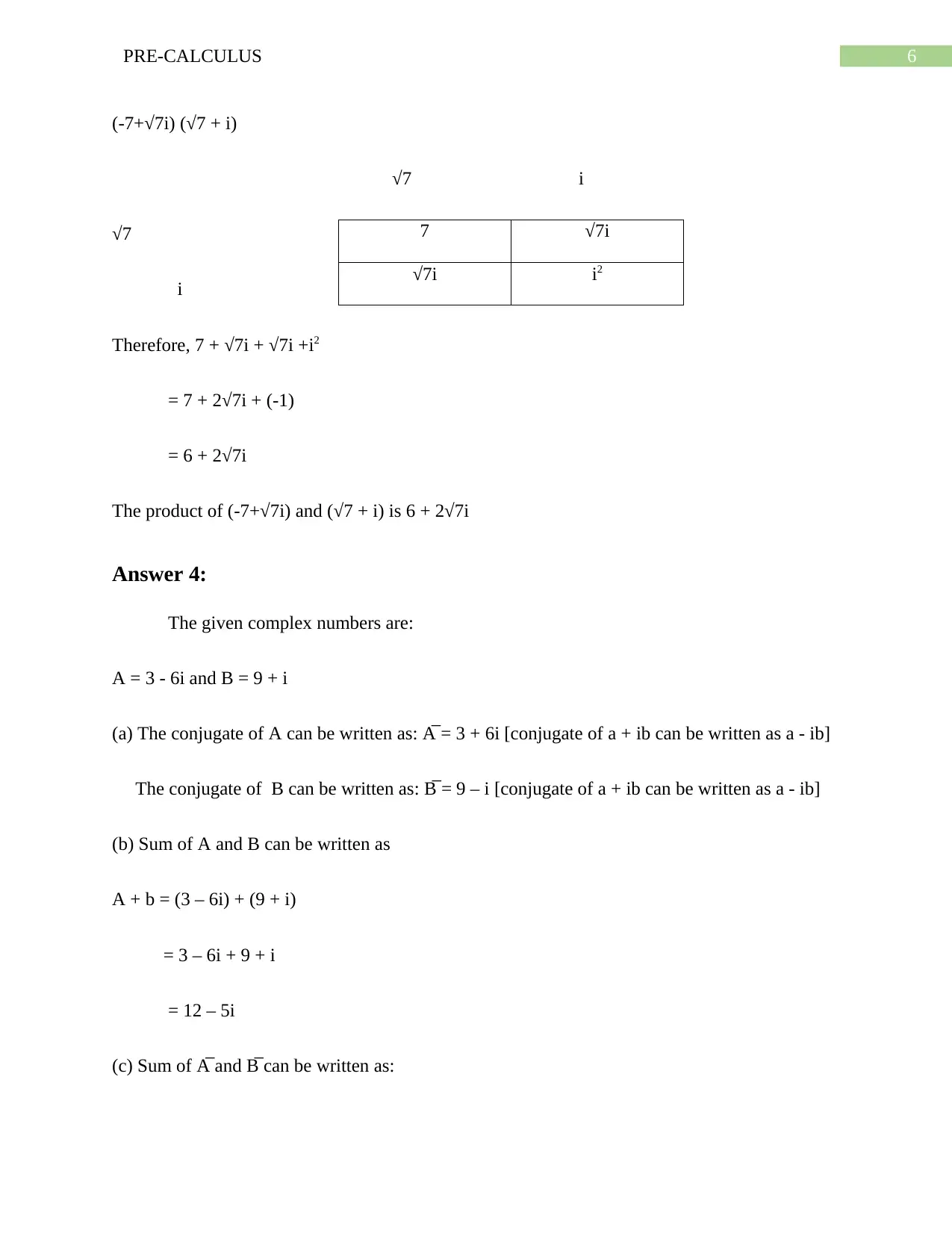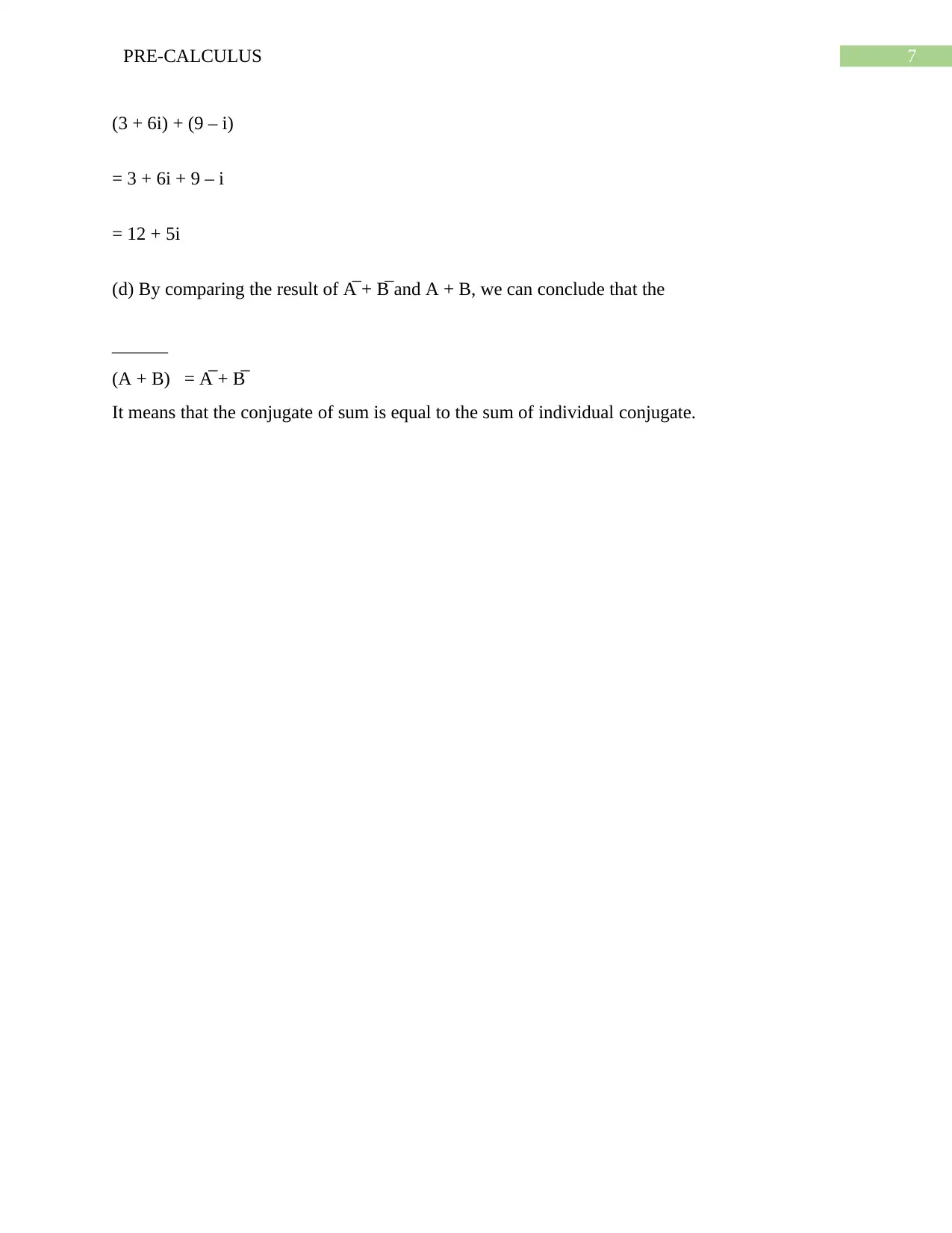Pre-Calculus Assignment: Functions, Vectors, and Complex Numbers
VerifiedAdded on 2022/08/18
|8
|955
|18
Homework Assignment
AI Summary
This pre-calculus assignment covers a range of topics including functions, equations, vectors, and complex numbers. The assignment begins with a problem involving a function representing the area of a rectangle, asking for the value of the function at a specific point and its real-world meaning. It then proceeds to solve exponential and linear equations, detailing each step of the solution process. The assignment also explores the unit circle, requiring the identification of points on its circumference and the equation they must satisfy. Furthermore, it utilizes trigonometric identities to simplify a product of trigonometric functions. The assignment also delves into vector analysis, requiring the calculation of a vector's component form and magnitude. Finally, it addresses complex number operations, including multiplication and finding conjugates, with step-by-step explanations. The assignment is a comprehensive review of key pre-calculus concepts, demonstrating problem-solving skills and mathematical understanding.
1 out of 8













![[object Object]](/_next/static/media/star-bottom.7253800d.svg)